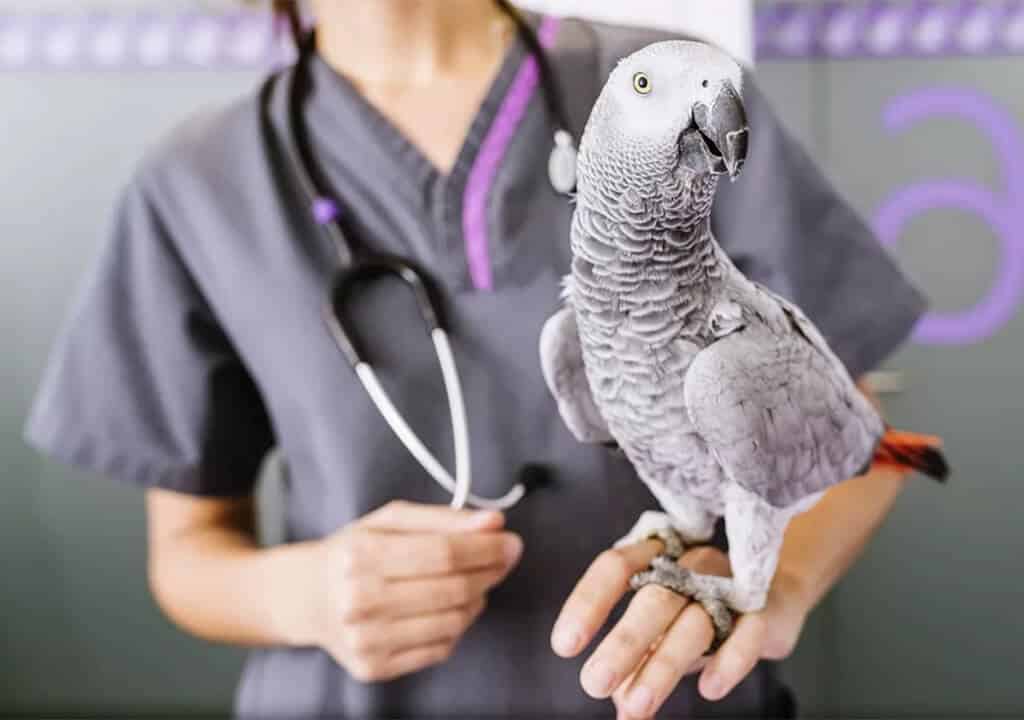bacterial infections
The spread of the infection is observed in a short time, especially in gregarious birds, when they are easily transmitted to each other. If a parrot has just been bought, when signs of infection are observed, go to the place where you bought it and look for the same symptoms in the birds. It is of great importance to comply with hygiene rules in preventing the emergence of infection.
coli bacillus infection:
This microorganism, which is normally found in the intestines of humans and mammals without harming it, is absent in birds. If the general hygiene rules are not observed, it can easily pass to the parrot and cause an infection. Therefore, before taking any action on your parrot, hands should be washed with soap in accordance with the rules and dried with a clean towel. Studies have shown that even by means of a towel, the microbe can be carried to the parrot unintentionally. Bacteria taken orally first settle in the intestines and cause an infection. Watery and bloody diarrhea is seen. If it bleeds, the picture becomes dramatically heavy. Liver, kidney, spleen infections occur. Joint swelling, eye and brain lesions may occur. It is a condition that requires urgent treatment. Appropriate antibiotic and supportive treatment should be initiated immediately in consultation with the veterinarian.
Spirochete Infection:
It is common in gray parrots, especially in the first 2 to 8 weeks after hatching. The disease is transmitted by mosquitoes. Shortness of breath, weakness, diarrhea, anemia and temporary paralysis are the most common clinical symptoms. Diagnosis is made by seeing spirochetes in the staining of blood samples. Penicillin is used for treatment.
Pasteurella Infection:
The microbe, which is passed to mice by the bite of the ticks carrying the microbe, is excreted through the feces. It passes into the parrot with food or inhalation and causes an infection. Wild birds can also carry the infectious agent. Depending on the effect of the microbe, it can create different pictures from respiratory system infection to severe systemic infection. It can cause difficulties in breathing, watery and bloody diarrhea, ear-eye, joint inflammation. The fluid deficit should be closed immediately, appropriate antibiotic therapy should be started, and the cage should be cleaned.
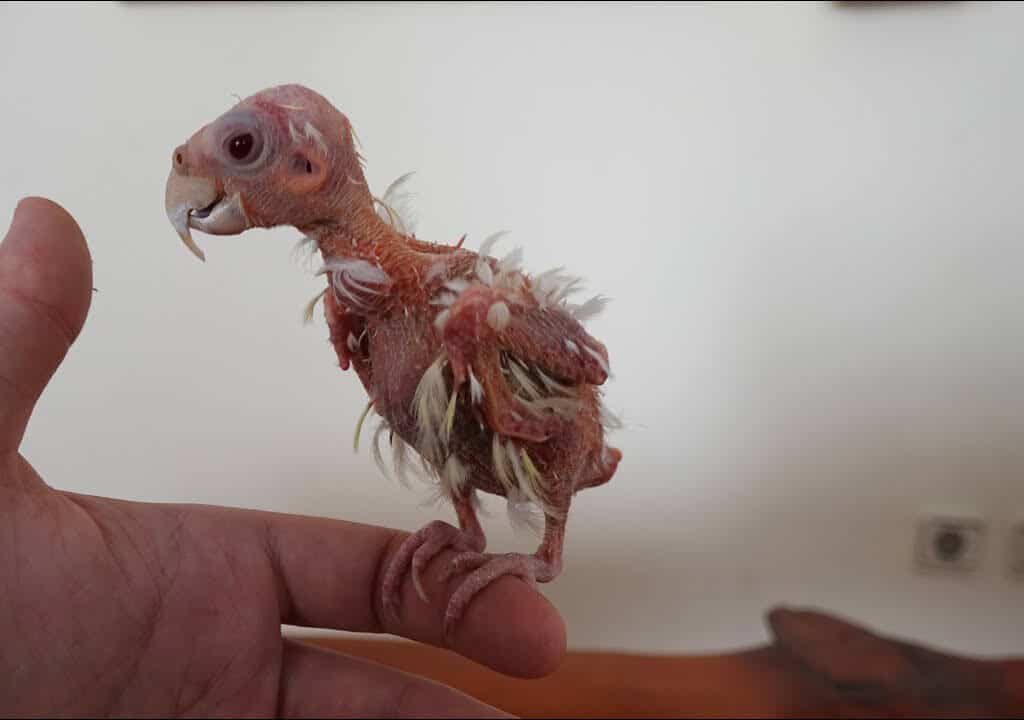
Salmonella Infection:
It can be seen in all caged birds, but is common in Amazons and gray parrots. It is transmitted by food and air. There may be a transition from egg to baby parrot. Transmission to humans is rare. If it enters the blood, the disease affects many systems. The liver, spleen, skeletal muscles, and kidneys are affected. Diarrhea, nervous system findings, joint and eye inflammation, skin findings may occur. The diagnosis is made by the production of the microbe in cultures taken from the samples. Appropriate antibiotics are given and supportive treatment is given.
Clostridium Infections:
Two types of clinics are observed: gangrene and paralysis. This microbe is normally found in the gut of birds, without harming them. As a result of the decrease in body resistance for any reason, it becomes dominant in the whole intestine and the disease occurs. It causes necrosis and gangrene in the intestine, kidney, spleen and liver, and bleeding is observed. Paralysis is observed not with this microbe itself, but with the mixing of the toxic substances it creates into the blood. Paralysis spreads from the legs to the body, spreads to the wings, neck and head area. The diagnosis is made by detecting this toxin in the serum. Antibiotics and antitoxins are given for treatment.
Enterococcal Infection:
This microbe, which is normally found in the intestines, reproductive and urinary tracts, skin and respiratory systems of birds without harming them, becomes active due to the decrease in body resistance. By mixing with the blood, it can lead to respiratory system infection, heart and joint inflammation. By producing this microbe from the samples, the diagnosis is made and appropriate antibiotic treatment is started.
Mega Bacterial Infection:
It is mostly seen in cockatiel, lovebirds and budgerigars. It has also been reported in cockatoos. It is a factor of anterior gastric enlargement. This bacterium, which is normally found in the anterior stomach, becomes active for various reasons and causes disease. Chronic weight loss due to malnutrition is observed. There is diarrhea that is green in color and watery. Finely ground bait pieces draw attention at the bottom of the cage. It is a long-lasting disease. Enlargement is detected by X-ray. Supportive therapy is started. Soft foods and appropriate antibiotics are given.
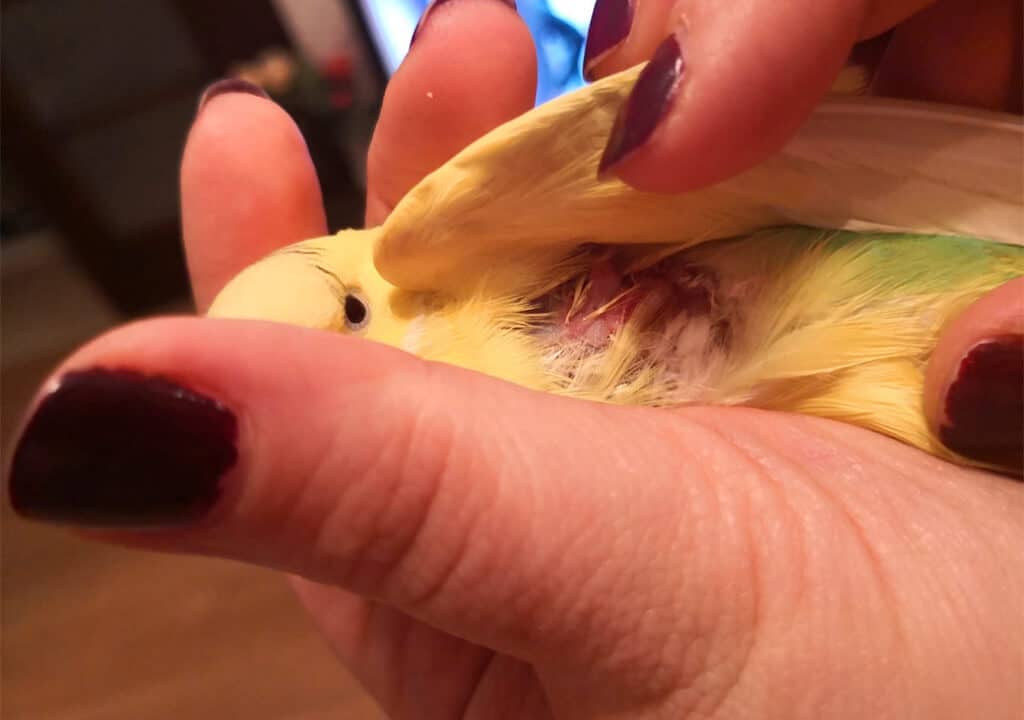
Mycoplasma Infection:
It is mostly seen in cockatiels and budgies. It causes pneumonia, sinusitis and eye infections. It spreads rapidly in crowded settlements. In treatment, sick birds are separated and appropriate antibiotics are given.
Mycoplasma Infection:
It is mostly seen in cockatiels and budgies. It causes pneumonia, sinusitis and eye infections. It spreads rapidly in crowded settlements. In treatment, sick birds are separated and appropriate antibiotics are given.
Staphylococcal Infection:
This microbe, which normally exists on the skin, mixes with the blood and infects the joints. There are itching, skin lesions, swelling in the joints, chafing marks on the beak. Appropriate antibiotics are given.
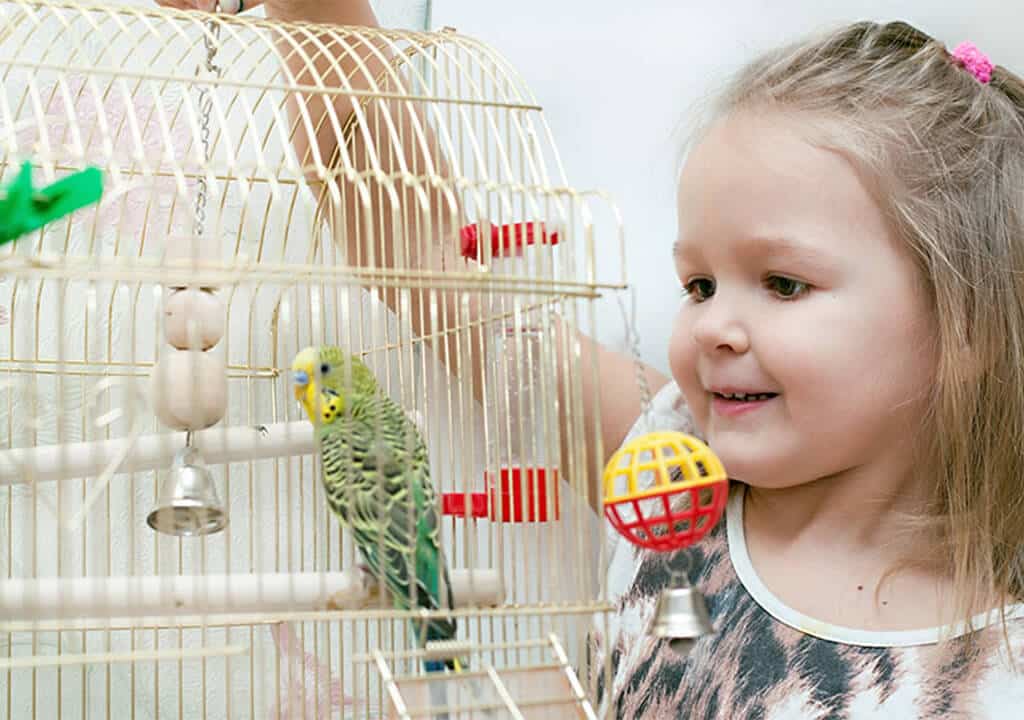
Virus Infections
Adenovirus Infection:
It causes sudden death. It causes liver, pancreas, lung, intestinal and eye infections.
Amazon Tracheitis:
It is an infection of the trachea that is common in Amazon parrots. Runny nose and eyes, shortness of breath, cough are clinical symptoms.
Pacheco’s Disease:
Herpes is an infection caused by viruses that can lead to sudden death. The virus is passed to healthy parrots through the feces and respiratory tract. It shows clinical signs such as stagnation, diarrhea, regurgitation of stomach contents, sinusitis, eye inflammation, tremor. Supportive treatment is given.
Papilloma virus infection:
Causes skin tumors in gray parrots. Definitive diagnosis is made by pathology. The tumor must be surgically removed.
Reovirus infection:
It is common in gray parrots and cockatoos. The virus is excreted with feces and infects each other. Anorexia, weight loss, coordination disorder, shortness of breath, anemia and diarrhea are the main clinical symptoms. It can cause intestinal and lung infections.
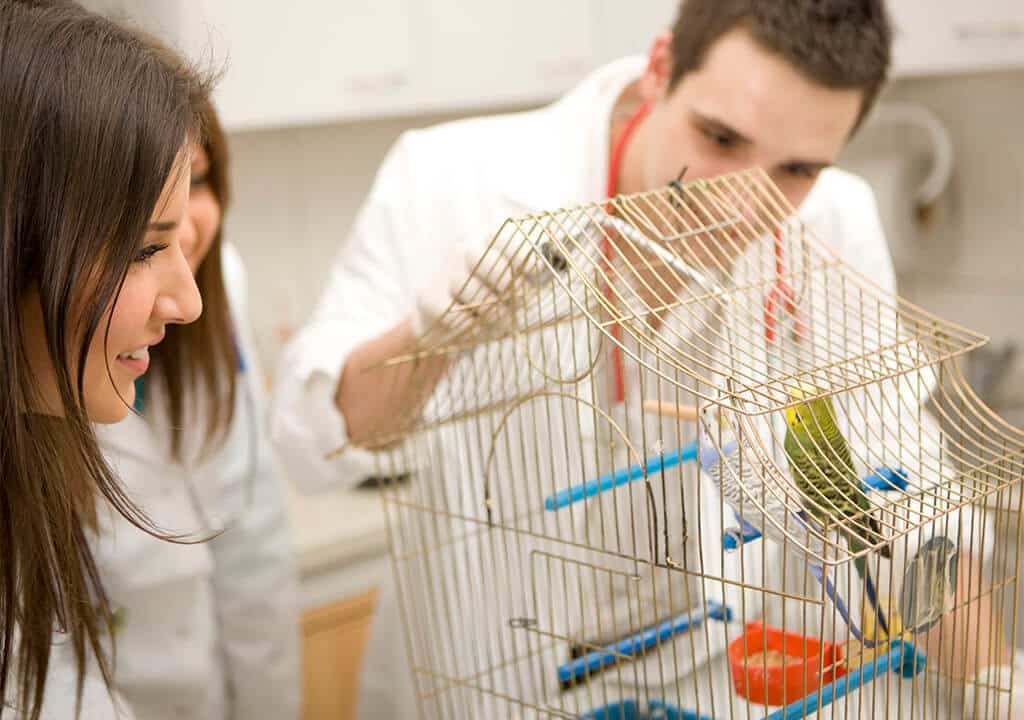
Fungal Infections
Candida Infection:
It is normally found in small amounts in the digestive tract of birds. It is mostly seen in young cockatiels. Long-term use of antibiotics, late ejaculation of the crop, decrease in body resistance, poor care conditions pave the way for infection. The agent mixed with the blood spreads to the whole body. All organs are affected. Fungal disease is treated with appropriate drugs.
Aspergillus Infection:
It causes respiratory system disease. It is common in gray parrots and amazons. This type of fungus, which is normally abundant in nature, becomes active with predisposing factors such as poor maintenance conditions, long-term antibiotic use, and cigarette smoke that adversely affects the respiratory tract. It most often involves the air sacs. It can join the disease in the lungs. It can affect all organs by mixing with the blood. It starts with symptoms such as loss of voice, loss of appetite, weakness, vomiting, drinking a lot of water. Over time, her general condition deteriorates and shortness of breath develops. The blood picture is adversely affected. On the x-ray, damage to the air sacs and lungs is detected. The table progresses dramatically. Supportive treatment should be started immediately. Supportive treatment should be started immediately.

Parasitic Infections
Ascaris Infection:
It is more common in cockatiels, macaws and budgies. Symptoms such as loss of appetite, weight loss, growth retardation, diarrhea are seen. If the number of parasites increases too much in the digestive tract, it leads to blockage. The diagnosis is made by seeing the parasite eggs in the stool under the microscope. Appropriate treatment is given.
Cestode Infection:
It is common in gray parrots and cockatoos. It causes general condition disorder, loss of appetite, weight loss, anemia. Diagnosis is made by seeing the ring and egg of the parasite in the stool. Appropriate treatment is given.
Cryptosporidium Infection:
It infects the digestive, respiratory and reproductive systems. Young parrots are more susceptible. Anorexia, weight loss, shortness of breath, diarrhea, sinusitis are seen. Diagnosis is made by the presence of parasite eggs in the stool. Appropriate treatment is given.
Giardia Infection:
It is seen in gray parrots, sultanas, lovebirds and budgerigars. It is fatal in puppies. It is transmitted through fecal-contaminated feed and water. Symptoms such as loss of appetite, weight loss, diarrhea, vomiting are seen. Diagnosis is made by the presence of motile parasites or cysts in the stool.
Haemoproteus Infection:
It occurs in gray parrots, arachnids and cockatoos. The parasite that settles in the red blood cells causes severe anemia as a result of their destruction. In addition, severe symptoms such as enlargement of the liver and spleen, and pulmonary blistering may also be observed.
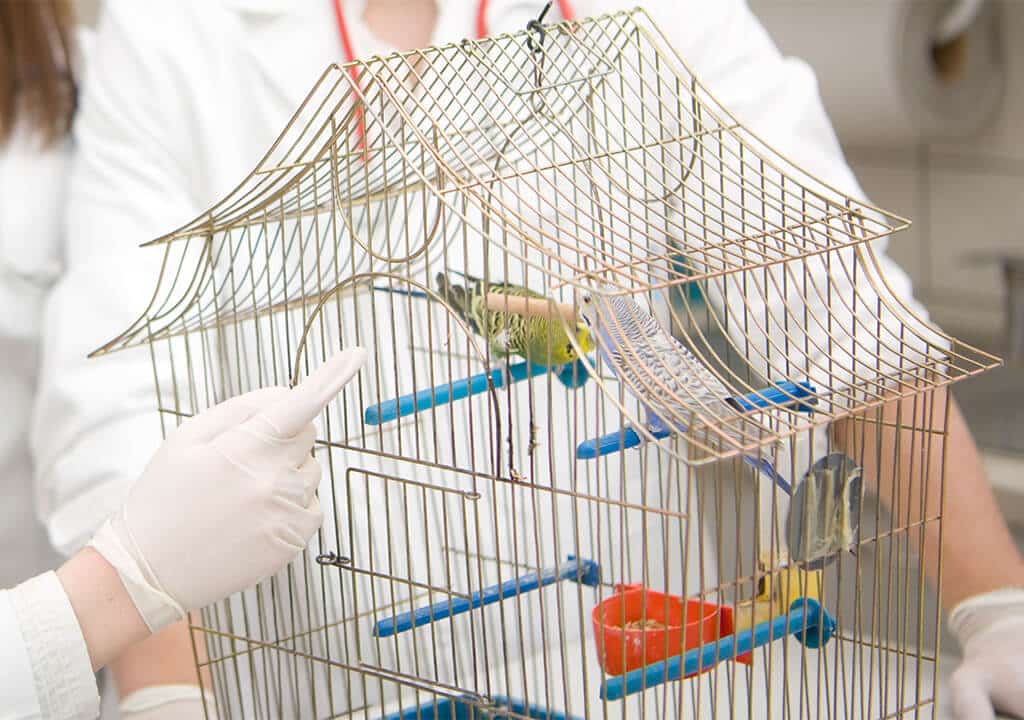
Lice and Tick Infection:
Poor care conditions pave the way for this infection. They infect each other in a short time. Symptoms such as restlessness, itching, feather plucking are seen. When the hairs are blown apart, it is possible to see the agent in areas close to the skin. Medicines in powder or lotion form are applied externally.
Infections Transmitted to Humans
Chlamydia (psittacosis) infection:
It is common in large parrots, especially arachnids and amazon parrots. Although birds carry the agent, they may not show any signs of disease for a long time (this period can be up to 8 years). During this time, there is a danger of infecting humans and other birds. Carriage is more common especially in sultan parrots. Young people are more susceptible to the disease. The mother and father transmit the infection through their mouths to the offspring. The agent is also found in feces, urine, mouth, eye and nasal secretions. Therefore, it is easily transmitted to other birds and humans by mouth. It lives for a long time in dried feces and secretions. Respiratory problems, diarrhea, tremor, loss of appetite, weight loss, runny nose, sinusitis are the main clinical signs seen in birds. In humans, symptoms such as flu-like fever, headache, malaise, chills and chills are observed. As a result of lung infection developing in the advanced table, the clinic becomes more severe. Sick birds are separated from others to prevent contamination. Diagnosis is made by various laboratory and x-ray examinations. Since the infectious agent is intracellular, a 45-day antibiotic treatment is required. Vaccination can be done to protect other birds. Stress should be avoided. More attention should be paid to the disinfection process of the cages.
Mycobacteria (tuberculosis) infection:
Amazon parrots are more sensitive than others. It is transmitted by feed and water or transmitted from person to parrot with tuberculosis skin lesion. It causes disease by settling in the digestive system of parrots. Swelling occurs in various parts of the body, especially in the abdomen. Diarrhea, hair growth disorders, ulcerated lesions in the skin and mouth, respiratory problems are the main clinical findings. Diagnosis is made by laboratory and x-ray examinations. Young children and adults with compromised immune systems can get the disease. It has a long-term (8-10 months) and difficult treatment method. The treatment of parrots is not satisfactory.
Newcastle disease:
It is a virus resistant to environmental conditions. It is more common in cockatiels, budgies and gray parrots. It is transmitted through the respiratory and oral routes. It causes respiratory system infection. Death is common as a result of severe lung infection. Although it has a vaccine, it provides a short-term immunity. Mortality rate after infection in gray parrots is 100% in unvaccinated and 76% in vaccinated.
West Nile Fever:
It is an infectious agent in parrots and crows. It is transmitted to humans by mosquitoes sucking blood. It is seen in Africa, especially around Egypt and Israel. While it can be seen in humans without any clinical symptoms, it can also result in death as a result of brain inflammation or the development of meningitis. There is no effective diagnosis and treatment method in birds and humans. In the struggle, stagnant waters and swamps should be sprayed and mosquito larvae should be killed.




